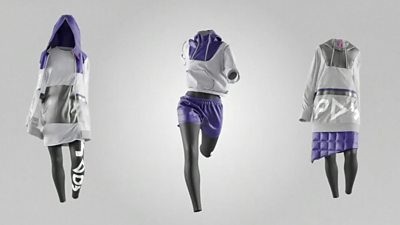Is Virtual Clothing on the Rise?

You have heard of virtual stores, virtual meetings, virtual school, virtual classes, but have you heard of virtual clothing? When I first heard this, it didn’t pique my interest but then I gave it a second thought; what does virtual clothing even mean? How do you wear virtual clothes? How does that even make sense? After some research, I learned that virtual clothing is based on the idea that if you want to post pictures in the latest trends but they are too expensive, you can buy virtual clothing. There are companies who will use photos that you send and edit them to make it seem like you are wearing the hottest brands.
Here’s the catch: you actually have to pay real money for this. One such company is DressX, where you can use AR (augmented reality) to “try on” different clothes and see what would look good on you. Once you find something you like, you send your photos and they will photoshop it so you can post your new look on Instagram for the world to see. Different products cost different amounts of money, even though it is still the same process, and you cannot actually wear it. For example, if you want a digital pair of earrings, it will cost you $25, but certain dresses can cost you well over $100. The companies that create these clothes even have virtual fashion shows, using deepfake models and keeping up with the constant trends. Oftentimes, though, the clothes that are available are extremely unique and might not entirely work well if it was physically on a person. For example, DressX has a dress called the Punk Spartan Outfit, a piece combining punk subculture with ancient Spartan togas. The outfit looks just as absurd as it sounds, and I don’t think that even the most prominent of fashion icons could make this piece work, as I struggle to understand how it’s even worn.
I personally believe that making it easier for people to follow new trends is a good idea at its core, but I don’t understand why someone would pay such a high price for virtual clothing. For some of these products, it makes more financial sense to just buy the actual item! So many of the items on this website are overpriced, and why waste money on virtual clothing when it’s cheaper to buy the actual thing. Despite this, virtual clothing isn’t all bad; it has a positive effect on the environment, but does it outweigh the impracticalities that come with it?
Virtual clothes don’t need any water, material fabrics, or CO2 for shipping. They also don’t require to be made in a factory which uses an exuberant amount of energy. Many clothes are thrown out or thrown in the back of the closet once a trend begins to dissolve and another one takes place, but with digital fashion, this waste is avoidable. There is an abundance of outfits that are only worn on TikTok or social media and not anywhere else, so this would be very efficient for those who wear specific clothes for the sole purpose of posting on these accounts.
As a very large environmentalist, I am intrigued by this part of the story. I believe that virtual clothing could be an innovative way to reduce the amount of clothes circulating around the world. When I think of this idea from a practical standpoint, though, it doesn’t make much sense. You can’t really wear these clothes, and you cannot use them in other photos; only the ones you send in. These virtual outfits are also very costly, which I understand is likely due to the amount of work it takes to photoshop these outfits onto their clients, but at the same time, you can find the real thing in a store or on Amazon for much cheaper. My opinion on this is divided because I recognize its impracticality, but I can’t help swooning over its environmental benefits.
Right now, there are six major companies who are pioneering in the virtual fashion world: Carlings, the Fabricant, Moschino, Tribute Brand, Hanifa, and Dress-X. They are all advertising virtual clothing as the future and branding themselves as leaders in a new era of fashion. Since this topic is controversial, and not everyone is willing to pay real money for a virtual outfit, I am not sure how far this industry will go. Of course, even trends that now dominate the market were once seen as ridiculous and ludicrous, but since this idea is simply not practical, virtual clothing may not achieve the success that these companies hope for.
I believe that since the pandemic, virtual clothing may have gained some appeal. Since schools have been online, people don’t feel the need to regularly wear expensive or fancy outfits. Social media activity has been more rampant than ever, so outfits that are only to be donned on the internet have had more interest. Social media is still very much integrated into everyday life as a vast amount of people, kids and adults alike, cannot go a day without sending their daily streaks or posting about their childrens’ achievements on Facebook. A few years ago, the idea of a virtual book was out of the question and now, kindles are everywhere and books have disappeared, so who knows, maybe clothes are next?

Liron is a senior who is stoked to be working at the Banner again for her fourth year (second year as communications officer)! Outside of writing for the...

